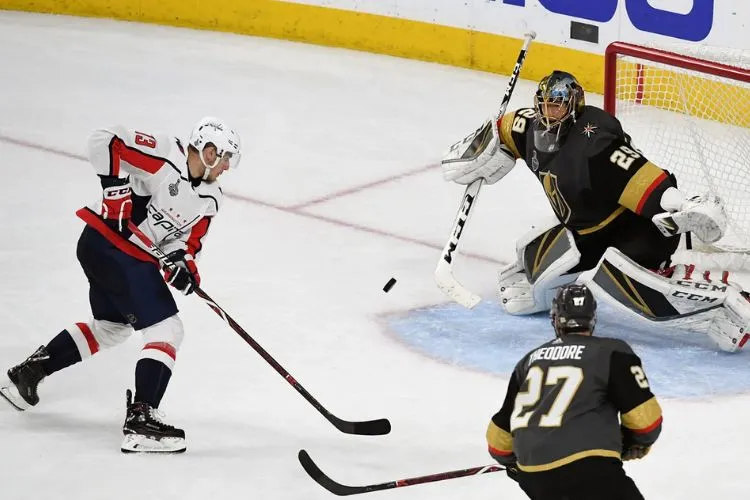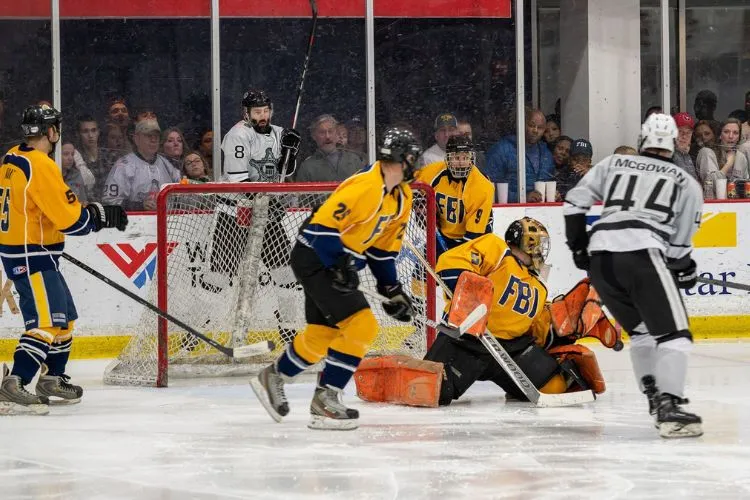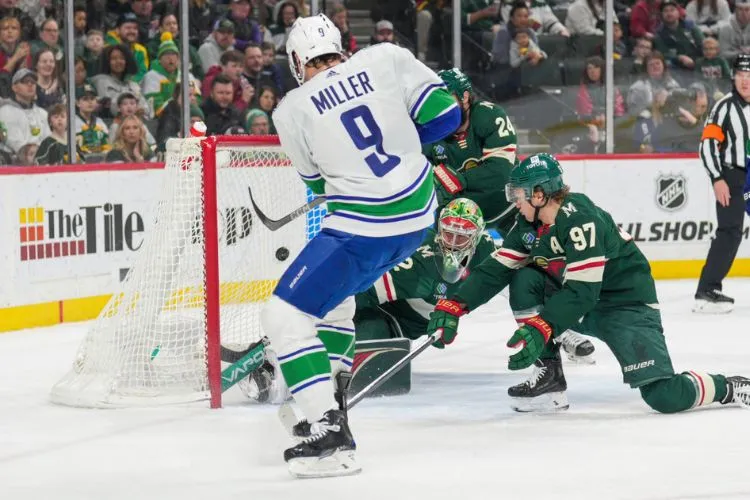If you’re new to the thrilling world of ice hockey, you’re in for a fast-paced and exhilarating experience. But to fully enjoy the game, it’s crucial to grasp its structure.
Central to this is understanding how many ice hockey periods are there. Let’s dive into the specifics of these periods and their place in the rhythm of the game.

How Many Ice Hockey Periods Are There?
There are 3 periods in an ice hockey game. Ice hockey is a dynamic sport where two teams, each typically comprising six players, face off on an ice rink.
The aim is to score goals by sending a puck into the opponent’s net. The game is well known for its speed and frequent physical contact.
The periods are a key part of an ice hockey game’s structure, dividing the match into segments that determine the flow of play and strategy.
The Structure of Ice Hockey Games

Number of Periods in a Game
Official ice hockey games consist of three periods. In professional circuits, like the National Hockey League (NHL), each period lasts 20 minutes.
This time represents the clock time, not the real passage of time, as the clock stops for various reasons, like penalties and puck out of play.
Intermissions Between Periods
15 to 17 minute intermissions separate each period. During this time, players recover and coaches review tactics.
Meanwhile, the ice surface undergoes maintenance, ensuring optimal playing conditions. Amateurs and younger players might see varied intermission lengths, adjusted to suit their needs.
Overtime and Shootouts
When the score is tied at the end of the third period, the game moves into overtime. This phase typically lasts five minutes in a “sudden death” format, where the first team to score wins.
The NHL uses three-on-three play, making it more likely that a goal will decide the outcome. If there’s no winner after overtime, a shootout – a series of penalty shots – often follows.
Different rules apply for international play or special tournaments, with variations including the duration and format of the overtime.
Role and Importance of Periods in Strategy

The division of the game into periods has a significant impact on how teams plan and execute their game. Players must manage their energy to maintain peak performance throughout the three periods.
Coaches use breaks to make tactical changes. The minutes toward the end of each period often bring a surge of effort from teams looking to enter the following rest break with an advantage.
Pro Tips for New Fans
Understanding the importance of each period’s final minute is crucial. This high-pressure time often leads to increased scoring efforts.
Watching how a team responds to the closing minutes can give fans insights into the coach’s strategy and team’s morale.
Differences in Other Forms of Hockey
Field hockey and roller hockey also divide their games into periods, but their duration and number may differ. It’s worth noting these differences to avoid confusion when transitioning from watching one form of hockey to another.
Breakdown of a Period

A critical aspect of any sport is understanding how each period is broken down, particularly focusing on clock management and the strategy behind player shifts and rest.
Clock management is crucial as it dictates the pace of the game, influencing both offensive and defensive strategies.
Teams must be adept at optimizing their play within the confines of the clock, whether it’s pushing for a score in the dying seconds of a period or slowing down play to maintain a lead.
Simultaneously, player shifts and rest periods are key to maximizing performance and minimizing fatigue. Coaches need to skillfully rotate players, ensuring they’re fresh and ready to contribute at optimal levels.
This requires a deep understanding of each player’s physical capabilities, game stamina, and the demands of their specific roles on the ice.
Effective shift changes can often be the difference between winning and losing, as they keep players at their peak, preventing mistakes that come from exhaustion and maximizing team synergy throughout each period.
Role of Officials During Periods
Officials play a pivotal role in the seamless execution of a game, with referees bearing the brunt of ensuring fair play and adherence to rules.
Their responsibilities extend beyond just making calls on fouls or penalties; they also monitor the safety of players, enforce rules consistently, and manage the flow of the game, making split-second decisions that can affect the outcome of a match.
Additionally, the efficient running of the clock and accurate scorekeeping are indispensable aspects managed by other officials.
Timekeepers precisely control game time, including start and stop during play, while scorekeepers meticulously record goals, penalties, and other vital statistics.
These functions are critical for the integrity of the game, providing transparent, unbiased records and ensuring the game adheres to its intended structure.
You may also read: Does Hockey Have Timeouts? | How Long Does an Ice Hockey Game Last?
Frequently Asked Questions (FAQs)
How long does an ice hockey game last including intermissions?
An ice hockey game usually lasts for about two and a half hours. This includes three 20-minute periods and two breaks. However, it may extend due to overtime and potential shootouts.
What happens if a game is tied after three periods in playoff games?
Playoff games often lead to multiple overtime periods that continue until a team scores, eliminating the possibility of a shootout.
Can the length of an ice hockey period vary in different leagues?
Yes, it can. Youth leagues often have shorter periods, usually ranging from 12 to 15 minutes.
Why are there intermissions in ice hockey?
Intermissions provide time for players to rest and strategize. They also allow for necessary maintenance of the ice.
How does the strategy change in the third period of a close game?
Teams will adjust their strategies based on the score. They may play more defensively to protect a lead or offensively if they’re trailing, sometimes even pulling the goalie from the net for an extra attacker.
Conclusion
The division of an ice hockey game into three distinct periods is more than just a break in action.
It’s a fundamental part of the game that impacts strategy, player performance, and the viewer’s experience.
Understanding the role of these periods will enhance your appreciation of the sport, whether you’re watching from the stands or through a screen.

Matthew James is a passionate skater who wanted to create a platform to share his love for skating with others. With a vision to create a vibrant community of skaters, he aims to provide a space where skaters of all levels can connect, learn, and grow together.
